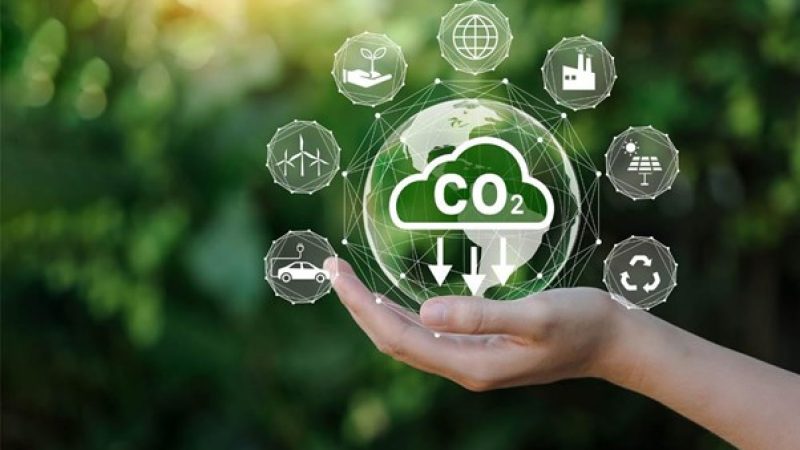Turning waste into treasure. Microbial solutions for carbon-neutral industrial processes


Climate change key challenges: industrialization and waste management
Industrialisation stands as one of the primary drivers of global climate change. Current greenhouse gas emissions are reaching unprecedented levels, with annual emissions of over 34.9 gigatons of carbon dioxide equivalents (Gt CO2-eq), leading to a 0.87°C increase in global temperatures. Future projections indicate further rises of 1 to 3.7°C in coming decades. Therefore, urgent efforts to reduce methane (CH4) and carbon dioxide (CO2) gas emissions are crucial to limit global warming to a maximum increase of 1.5°C above preindustrial levels by 2030.
Organic waste management is another challenge, with Belgium alone discarding 130 kg per inhabitant annually. Much of this waste is converted to biogas (a gaseous mixture of CH4 and CO2) through anaerobic digestion for heat and power generation purposes. But the surplus or the unsuitable biogas is often flared or vented, contributing to greenhouse gas emissions, climate change and causing significant economic losses.

Picture by Marion P. via Pixabay
This situation highlights a paradox in biogas utilization. Anaerobic digestion is often praised as a sustainable method for resource recovery, energy production and a tool to combat climate change by recycling organic waste. However, when we do not use all of its components, it becomes yet another polluting source with significant economic and environmental consequences. This disconnection between the sustainable intent of anaerobic digestion and its practical implementation, emphasises the need for more effective resource recovery and emission reduction strategies.
Consequently, this contradiction prompted us to consider an alternative approach: What if we could develop a system that efficiently utilizes the primary components of biogas (CH4 and CO2), regardless of their composition, and create economic value from these gases while simultaneously reducing the overall carbon footprint of the process? By reimagining biogas utilization, a potential waste stream could be transformed into a valuable resource, addressing both environmental concerns and economic viability of already existing industrial processes.
A Novel Approach to Biogas Valorization
Microorganisms are powerful allies in tackling industrial challenges in the face of mounting environmental concerns and resource scarcity. Microalgae and methanotrophic bacteria (i.e. bacteria feeding on methane), in particular, show remarkable potential for transforming energy production and waste management. These microorganisms can convert waste streams containing carbon dioxide (CO2) and methane (CH4) into valuable chemical compounds, offering a sustainable approach to resource utilization.

Picture by Patricia Mohedano Caballero
Methanotroph-Microalgae Co-cultures for ectoine production
This was the main aim of this master thesis. We proposed a novel microbiological system that repurposes biogas unsuitable for energy production or biogas that was produced in excess, transforming it biologically into a compound with a higher added value, namely ectoine. Ectoine is a highly sought after compound for pharmaceutical and cosmetic industries due to its protective properties, guarding cells against different kinds of stresses. With an annual global consumption of 15,000 tonnes and a market value of 600-1000 euros per kilogram depending on its purity, ectoine holds significant industrial importance.

Picture by Anton Mathyukha via Depositphotos
Currently, ectoine is produced through sugar fermentation using the heterotrophic (i.e. non-photosynthetic) halotolerant (i.e. tolerant to high levels of salt) bacteria Halomonas elongata, with glucose as their primary carbon source. The environmental impact of this industrial process is significant as it heavily relies on glucose derived from agricultural crops. The use of this glucose necessitates extensive land use, water consumption and has a high carbon footprint.
Recent studies have already investigated methanotrophic bacteria’s ability to convert methane (CH4) into ectoine. These studies found potential, but they fall short on being carbon-neutral due to their disregard for CO2 utilization in biogas and their high energy requirements for aeration. Our research addresses these limitations by developing a more sustainable and efficient ectoine production method using a mixed culture of marine methanotrophic bacteria and microalgae from the North Sea, with biogas as the sole feedstock.
Advantages of Methanotroph-Microalgae collaborative systems
This innovative system takes advantage on the collaborative relationship between methanotrophic bacteria and microalgae to overcome key challenges in current ectoine production processes as:

Table by Patricia Mohedano Caballero
As a result, this approach has the potential to revolutionize industrial processes by creating modern circular biorefineries, effectively turning waste into value for present and future generations. Our research aims to make the industrial process more environmentally friendly without compromising ectoine production yields or economic viability, paving the way for a greener, more sustainable industrial landscape.
What comes next?
This groundbreaking study is the first of its kind and has brought valuable insights in this field. Nevertheless, more research is needed to address other knowledge gaps in this area of research. The next phases will focus on optimizing and scaling the process to improve our understanding of sustainable methods for producing ectoine and utilizing biogas.
